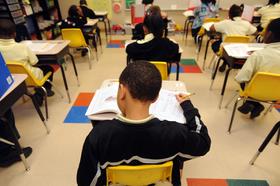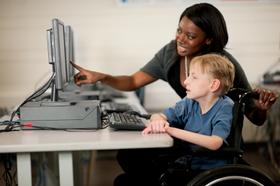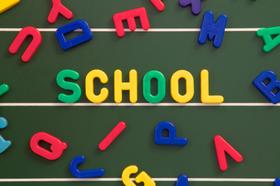Serving 304 students in grades 9-12, Falcon View Connections High School ranks in the bottom 50% of all schools in Minnesota for overall test scores (math proficiency is bottom 50%, and reading proficiency is bottom 50%).
The percentage of students achieving proficiency in math was 11-19% (which was lower than the Minnesota state average of 46%). The percentage of students achieving proficiency in reading/language arts was 60-69% (which was higher than the Minnesota state average of 51%).
The student-teacher ratio of 30:1 was higher than the Minnesota state level of 13:1.
Minority enrollment was 21% of the student body (majority Black and Hispanic), which was lower than the Minnesota state average of 39% (majority Black).
Top Rankings
Falcon View Connections High School ranks among the top 20% of public schools in Minnesota for:
Category
Attribute
Reading/Language Arts Proficiency
School Overview
Grades Offered
Grades 9-12
(Exclusively virtual)
(Exclusively virtual)
Total Students
304 students
Gender %
Total Classroom Teachers
10 teachers
School Rankings
Overall Testing Rank
#963 out of 1773 schools
(Bottom 50%)
(Bottom 50%)
Math Test Scores (% Proficient)
11-19%
46%
Reading/Language Arts Test Scores (% Proficient)
60-69%
51%
Science Test Scores (% Proficient)
40-49%
41%
Student-Teacher Ratio
30:1
13:1
American Indian
2%
2%
Asian
1%
7%
Hispanic
5%
12%
Black
6%
12%
White
79%
61%
Hawaiian
n/a
n/a
Two or more races
7%
6%
All Ethnic Groups
Graduation Rate
65-69%
84%
Eligible for Free Lunch
39%
36%
Eligible for Reduced Lunch
7%
7%
School Statewide Testing
School District Name
Source: National Center for Education Statistics (NCES), MN Dept. of Education
Profile last updated: 02/09/2025
Frequently Asked Questions
What is Falcon View Connections High School's ranking?
Falcon View Connections High School is ranked #963 out of 1,773 schools, which ranks it among the bottom 50% of public schools in Minnesota.
What percent of students have achieved state testing proficiency in math and reading?
11-19% of students have achieved math proficiency (compared to the 46% MN state average), while 60-69% of students have achieved reading proficiency (compared to the 51% MN state average).
What is the graduation rate of Falcon View Connections High School?
The graduation rate of Falcon View Connections High School is 65-69%, which is lower than the Minnesota state average of 84%.
How many students attend Falcon View Connections High School?
304 students attend Falcon View Connections High School.
What is the racial composition of the student body?
79% of Falcon View Connections High School students are White, 7% of students are Two or more races, 6% of students are Black, 5% of students are Hispanic, 2% of students are American Indian, and 1% of students are Asian.
What is the student-teacher ratio of Falcon View Connections High School?
Falcon View Connections High School has a student ration of 30:1, which is higher than the Minnesota state average of 13:1.
What grades does Falcon View Connections High School offer ?
Falcon View Connections High School offers enrollment in grades 9-12 (Exclusively virtual).
What school district is Falcon View Connections High School part of?
Falcon View Connections High School is part of Wabasha-Kellogg School District.
Recent Articles

Why Single-Sex Public Schools are Growing in Popularity
This article examines the growing trend of single-sex public schools in the United States. It explores the potential benefits, research findings, and controversies surrounding gender-specific education, as well as the factors driving its increasing popularity among parents and educators.

When Teachers Cheat: The Standardized Test Controversies
Teachers across the country are being accused of cheating on standardized tests, using erasers to conveniently change their students’ answers. However, are these teachers driven to cheat because the funding system is flawed?

When Field Trips Turn Deadly: Who is Responsible?
Recent deaths during field trips have parents and school officials questioning the safety of these excursions. Learn about these tragedies and what parameters should be in place to ensure a safe field trip.





